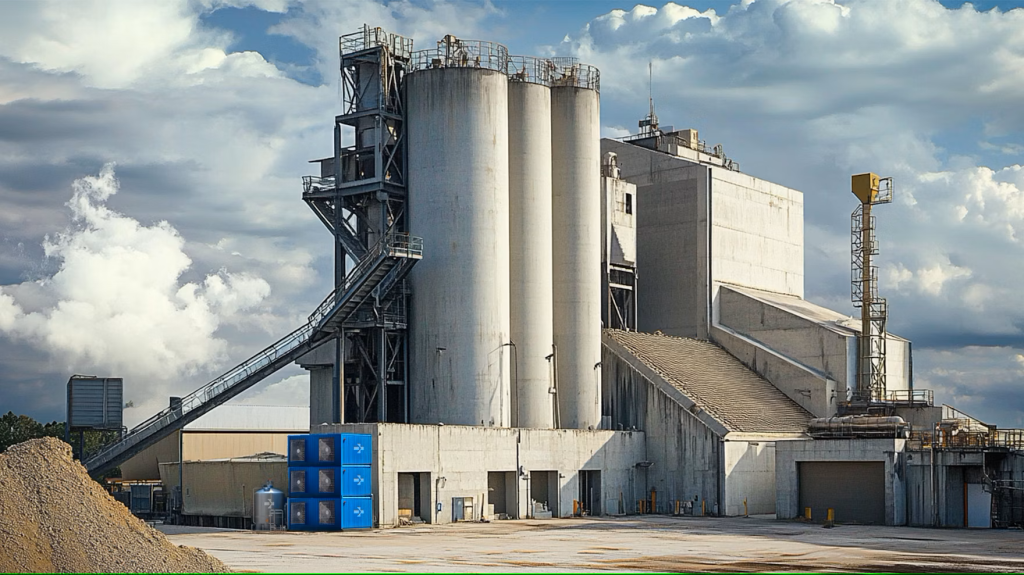
Proactive Concrete: 4 Questions on Direct Air Carbon Capture
This article originally appeared in For Construction Pros
The global production of cement and—in turn—concrete is one of the world’s largest creators of greenhouse gases. The industry has placed a goal for both production and contractors alike, to be net-zero regarding carbon dioxide (CO2) emissions by 2050. Achieving this will require a ton of hard work a lot of work has already laid a solid foundation. Where efforts are being made at making the jobsite more efficient and productive (even with a challenged skilled labor force), one of the levers being addressed is the utilization of the gas itself.
Concrete Contractor connected with Samir Adams, managing director at Carbon Capture & Commercialization on their goals, how their technology can aid the net-zero effort, and the effects for concrete contractors themselves. He has extensive experience in leading teams to develop sustainable energy solutions and advancing emissions reduction technologies.
Concrete Contractor: Readers may be familiar with carbon capture utilization and storage (CCUS). What is direct air carbon capture (DACC)? How is it different from CCUS?
Samir Adams, Managing Director, Carbon Capture & CommercializationCarbon Capture & CommercializationDACC is a specific type of carbon capture technology designed to remove CO2 directly from the ambient air, rather than capturing emissions at the source, such as power plants or industrial facilities. Unlike traditional CCUS, which focuses primarily on capturing CO2 emitted during industrial processes or power generation, DACC aims to remove already existing CO2 from the atmosphere. This makes DACC particularly valuable for addressing legacy emissions and for tackling sectors where emissions are diffuse or challenging to capture directly.
CCUS is generally associated with capturing CO2 at point sources, like factories or power plants, before it enters the atmosphere. Once captured, it can be either utilized in various applications such as enhanced oil recovery (EOR), in the production of certain materials or permanently stored underground to prevent it from contributing to climate change.
DACC, on the other hand, captures CO2 directly from the air around us. This flexibility allows it to be deployed in a range of environments, including urban, industrial, or even remote locations. The captured CO2 can be utilized or sequestered, similar to CCUS, but DACC’s real value lies in its ability to contribute to net-negative emissions by reducing the total concentration of CO2 already present in the atmosphere.
In practical terms, DACC offers a modular approach, allowing CO2 capture units to be placed where they are needed most, which is particularly advantageous in locations without concentrated sources of emissions. This difference means that while CCUS is effective at minimizing new emissions, DACC is critical for removing existing emissions and can play a key role in long-term climate goals by actively reducing atmospheric CO2 levels.
Both technologies are essential for a comprehensive climate strategy. CCUS helps reduce the emissions produced today, while DACC works to remove the historical emissions that are already affecting our climate.
Concrete Contractor: How can DACC help shape the future of concrete production?
By integrating CO2 captured through DACC into concrete, we can not only reduce the carbon footprint of the production process but also enhance some of the material properties of the concrete itself.
This integration happens through a process where the captured gas is injected into the concrete mix during production. This reaction results in the formation of calcium carbonate, which strengthens the concrete and contributes to a denser, more durable material. This has several implications for the industry.
- Reduced Carbon Footprint. Traditional concrete production relies heavily on cement, which is responsible for a large percentage of the industry’s emissions. By incorporating CO₂ captured from the air, DACC technology helps offset some of these emissions, contributing to a lower overall carbon footprint for concrete production.
- Enhanced Material Properties. The integration process not only helps sequester carbon but also improves the strength and durability of the concrete. This results in concrete that is more resistant to environmental stressors, such as freeze-thaw cycles and chloride penetration, which ultimately contributes to longer-lasting structures.
- Sustainability and Compliance. As regulatory pressures increase, contractors and construction firms are being asked to meet stringent sustainability standards. DACC provides a practical way to access CO2 locally and integrate it into concrete, aligning with sustainability goals and helping the industry move toward greener construction practices.
- Localized Supply. One of the significant advantages of DACC is its modularity and ability to capture CO2 near the point of use. This reduces the need for long-distance transportation and cuts down logistical challenges and associated emissions. This is particularly beneficial for concrete production facilities that are seeking efficient and sustainable ways to incorporate carbon capture.
By leveraging DACC, the concrete industry can transform from being a significant carbon emitter to an active participant in carbon sequestration. This technology not only provides a pathway for reducing emissions associated with concrete production but also contributes to creating stronger, more durable infrastructure. Ultimately, DACC is an important tool for modernizing the concrete industry, aligning it with broader sustainability goals, and preparing it for a future where reducing and reusing carbon is paramount.
Concrete Contractor: How can DACC technology provide a sustainable solution to the concrete industry’s significant carbon emissions?
DACC technology offers a sustainable solution to the concrete industry’s significant carbon emissions problem by providing a means to directly integrate captured CO2 into the production process, effectively turning a major greenhouse gas into a valuable asset. By using DACC to capture and inject CO2 into concrete during production, the industry can address emissions on multiple fronts.
This captured CO₂ is used to form calcium carbonate within the concrete mix, which strengthens the material and enhances durability. This improvement in material properties reduces the need for frequent repairs and replacements, thereby decreasing the overall lifecycle emissions of concrete structures. By utilizing CO2 as a feedstock, the need for additional raw materials can be reduced. This results in a lower carbon footprint for the production process, which helps the concrete industry align with evolving sustainability standards and regulations.
DACC’s modular nature means it can be implemented at or near the point of need, such as at concrete production facilities. This eliminates the need for long-distance transportation of CO₂ and reduces emissions associated with logistics, making the entire process more sustainable.
By integrating DACC technology, the concrete industry can transform its approach to production, turning a traditionally high-emission process into one that actively contributes to carbon sequestration. This not only supports the industry’s sustainability goals but also helps to create stronger, more durable infrastructure that will have a positive environmental impact in the long run.
Concrete Contractor: How does DACC affect the concrete contractor on the jobsite? How does this help meet the industry’s growing pressure to reduce emissions while maintaining product quality?
For concrete contractors, DACC technology has practical implications on the jobsite, particularly in how the integration of captured CO2 affects the performance and workability of concrete. The use of CO2-infused concrete provides a way for contractors to balance the need for high-quality materials with the growing pressure to reduce emissions and adopt sustainable practices.
- Improved Workability and Setting Time. The integration of CO2 into the concrete mix can improve its workability, making it easier to place and finish. Contractors may also benefit from slightly accelerated setting times, which can lead to shorter project timelines and increased productivity on the jobsite. This means crews can move on to subsequent tasks more quickly, which ultimately contributes to efficiency and cost savings.
- Material Quality and Durability. CO2-infused concrete often exhibits enhanced strength and durability due to the formation of calcium carbonate within the mix. This leads to a more resilient material that is less prone to cracking and other forms of degradation. For contractors, this means fewer callbacks and repairs, providing greater long-term value to clients and reducing overall project costs.
- Compliance with Sustainability Standards. The construction industry is facing increasing pressure to meet sustainability and emissions reduction goals. By using concrete produced with DACC technology, contractors can demonstrate their commitment to greener practices. This can be a differentiator in a competitive market, helping contractors secure more projects and align with clients who prioritize sustainability.
- No Major Changes to Workflows. One of the advantages of using CO2-infused concrete is that it does not require significant changes to existing workflows on the jobsite. The concrete behaves similarly to traditional mixes, allowing contractors to integrate this more sustainable option without the need for extensive retraining or new equipment.
Overall, DACC provides concrete contractors with a practical way to improve the quality and durability of their projects while also meeting the growing demand for sustainable construction practices. It allows contractors to continue delivering high-quality work while reducing their carbon footprint, contributing positively to both environmental goals and client satisfaction.
Let’s talk about bringing carbon capture to your doorstep.
Safe Harbor Statement: This article contains forward-looking statements. Actual results may differ materially due to risks including market conditions, R&D outcomes, and other factors. CC&C assumes no obligation to update these statements.
